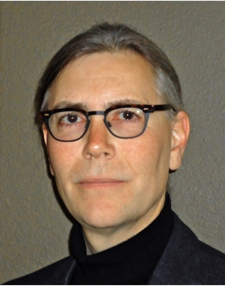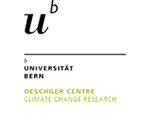Plenary Speaker - James Syvitski

Downloads
> View the online video with slides
> Download the powerpoint presentation (ppsx)
Biography
James P.M. Syvitski
CSDMS Integration Facility, INSTAAR,
U. Colorado—Boulder, CO, USA
James.syvitski@colorado.edu
Professor James P.M. Syvitski received a Ph.D. at U British Columbia in 1978, where he developed a quantitative understanding of particle dynamics across the land-sea boundary. He has held a variety of appointments within Canadian universities (1978-95) and was a Senior Research Scientist within the Geological Survey of Canada and the Bedford Institute of Oceanography (1981-95). James served as Director of INSTAAR – a U Colorado - Boulder Earth and Environmental Systems Institute from 1995-2007, and presently holds CU faculty appointments in Geological Sciences, Applied Mathematics, Atmosphere & Ocean Sciences, Hydrological Sciences, and Geophysics.
Professor Syvitski is presently Executive Director of CSDMS— Community Surface Dynamics Modeling System, an international effort to develop, support, and disseminate integrated software modules to the broader Geoscience community. James is also Chair of the International Geosphere-Biosphere Programme that provides essential scientific leadership and knowledge of the Earth system to help guide society onto a sustainable pathway during rapid global change. Professor Syvitski received the 2009 Royal Society of Canada, Huntsman Medal for Outstanding Achievements in Marine Science, and is a Fellow of the American Geophysical Union.
Abstract: Rivers & Deltas in the Anthropocene
For over 2 decades, PAGES has been putting key global environmental parameters and trends into context with scientific underpinning. What has the earth experienced in its past in terms of CO2, surface temperature, sea level rise, sea ice extent, behavior of glaciers and ice sheets, forest cover, and so on? Just how resilient IS our planet? Research on global sustainability needs the context that PAGES continues to provide and is necessary within the IGBP and IPCC communities. However the scientific challenges facing PAGES scientists are not be underestimated as they employ proxy data from the Holocene, calibrated with observations from the modern Anthropocene — a time when the human species had a major impact on the Earth’s surface. Although physics remain physics, humans have intervened against the force of gravity, decelerated and accelerated natural processes, focused energy, altered or destroyed ecosystems, and altered the earth’s climatology. Using the present as a key to the past must proceed with this knowledge.
My contribution is to understand and predict the global delivery of water and sediment to the coastal ocean and with particular reference to deltas. What is the state of the art in predicting these fluxes through the Holocene before and after the human footprint was large? Holocene river flow was a simple balance of precipitation, evapotranspiration and runoff, while accounting for the transient storage terms of groundwater pools, lake levels, snow and ice balance. Climate therefore was the major driver of Holocene floodplains and deltas.
During the Anthropocene in contrast, humans changed river systems into unnatural conduits of water, sediment, carbon, nutrients and pollutants. Today we significantly store freshwater in reservoirs, changing the timing and nature of flooding. We have built great canals, straitened rivers, constrained channels with stop-banks and levees, diverted water from one drainage basin to another, substituted irrigation canals for distributary channels, and pulled large amounts water out of groundwater pools. Deforestation, mining and agriculture has introduced much fresh sediment into these waterways; fluvial sediment loads doubled on average, and deltas rapidly grew during the early Anthropocene. Subsequently we have built a major dam (>15 m in height) every day for the last 110 years, on average, sequestering hundreds of GT of sediment and carbon in reservoirs and greatly limiting the transport of sediment to the coast. Today deltas are subsiding at rates four times larger than the sea level is rising, on average; with subsurface mining (oil, gas or groundwater) being the main culprit. Coastal retreat has accelerated from m/y to km/y; saltwater intrusion has turned soils saline.
The PAGES community can collectively help us to understand the W5 (what, where, when, who, why) on how humans created the Anthropocene. Furthermore PAGES can place this global footprint of humans into a context where we can begin to develop effective policies and protocols for supporting global sustainability.















